Two bright new supernovae are now within the range of amateur telescopes in the western sky at nightfall.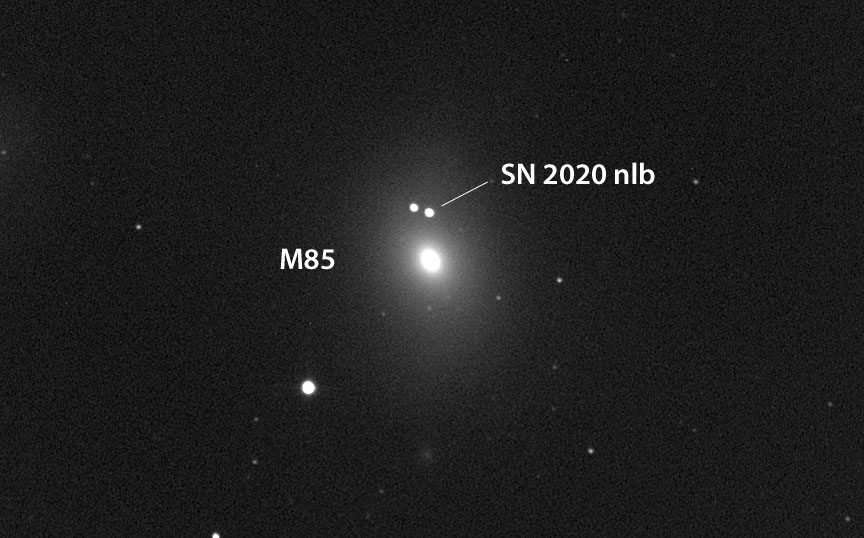
© Gianluca MasiSupernova 2020nlb in the galaxy M85 in Virgo was a 17th-magnitude blip at discovery but has grown brighter each night. Now at magnitude 12.2 (July 7th), it's bright enough to see in a 6-inch telescope. M85's supernova is currently almost a full magnitude brighter than the 13.1-magnitude field star immediately to its northeast. The supernova sits 1.0″ east and 43.2″ north of the core. North is up.
If you want to see a supernova in your lifetime, why wait around for Betelgeuse to blow up? If you have a 6-inch telescope and access to a dark sky, you can see one right now. Two actually.
Both are visible in the western sky at nightfall in the neighboring constellations Virgo and Coma Berenices.The first of the pair, dubbed 2020nlb
, was discovered by the
Asteroid Terrestrial-impact Last Alert System (ATLAS) on June 25th in the 10th-magnitude galaxy M85. Located in Coma Berenices 60 million light-years from Earth, M85 is an
elliptical galaxy a quarter again as large our Milky Way. The "M" stands for Charles Messier, an 18th century French astronomer who compiled a list of galaxies, star clusters and nebulae he stumbled on during searches for his favorite prey, comets.
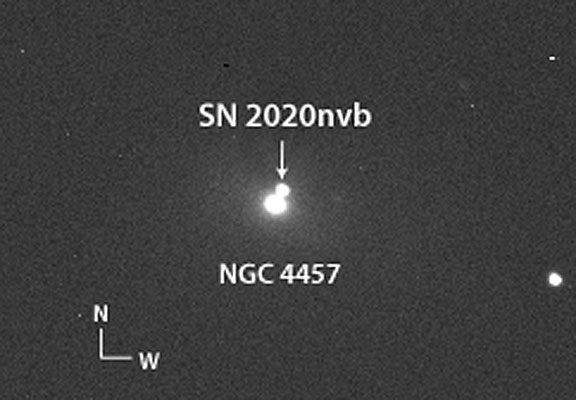
© Gianluca MasiLocated just 3.3″ west and 8″ north of the core, the bright supernova 2020nvb appears "stuck" to NGC 4457's bright nucleus. North is up.
Japanese amateur and prolific supernova hunter
Koichi Itagaki nabbed
SN 2020nvb on July 1 in NGC 4457, a spiral galaxy in Virgo located about 55 million light-years away. Each of these newly discovered supernovae occurred in a close binary system where a tiny, superdense white dwarf star orbits a normal star. The dwarf is only about the size of Earth, but its matter is packed so tightly the object has nearly the same mass as the Sun. You'd need a massive crane to lift even a thimbleful!
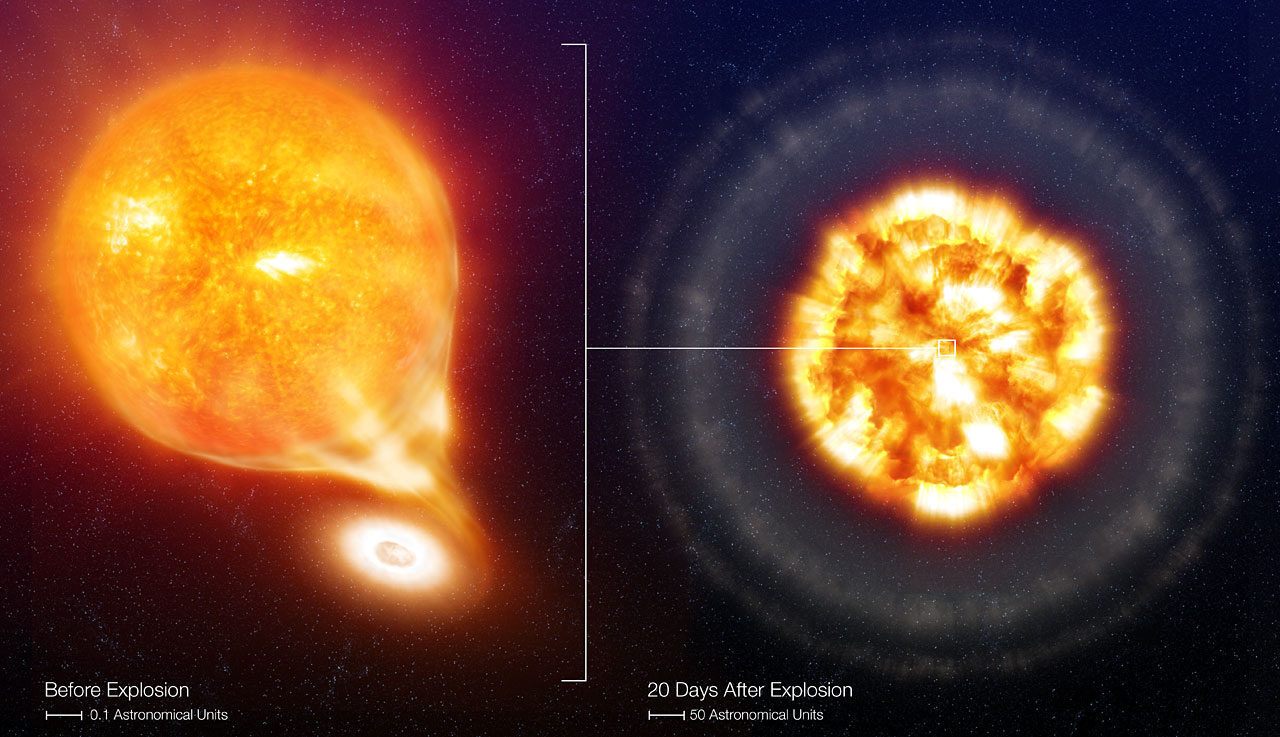
© ESOArtist's view of a white dwarf, surrounded by an accretion disk of material pulled off its larger companion (left). The hot gas funnels down from the disk to the dwarf's surface where it accumulates until it initiates a runaway fusion process that destroys the star (right).
The dwarf's powerful gravity siphons material from its companion onto its surface until the added weight and pressure of the stolen material initiates a runaway nuclear fusion within the dwarf and boom! — it explodes cataclysmically as a supernova.
Like breakfast cereals, supernovas come in a
variety of types but are broadly divided into Type Ia (white dwarf explosions in close pairs) and Type II (massive star blasts like Betelgeuse). Both 2020nlb and 2020nvb are Type Ia supernovae, among the brightest "candles" in the universe. In fact, the most luminous Type Ia supernovae routinely outshine their entire host galaxy! Betelgeuse is a standalone, gigantic star. One day it will run out of nuclear fuel, halt fusing new elements, and then collapse and explode as a supernova as bright as the gibbous Moon.
The M85 supernova quickly brightened from magnitude 16.8 at discovery to 12.2 on July 7 and may still be getting brighter. The NGC 4457 supernova is even brighter at magnitude 11.9 and located a little northwest of the center of the galaxy's nucleus.
STAR-HOP TO A SUPERNOVA
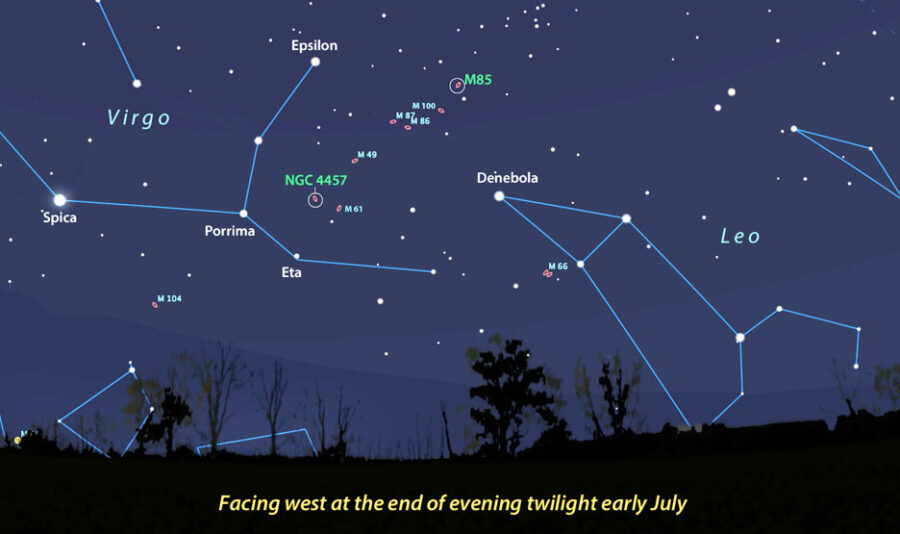
© StellariumThis wide-view map will orient you. Key guide stars are Denebola in the tail of Leo and Porrima, Eta, and Epsilon Virginis — all visible with the naked eye. See detailed map below. Stars are shown to magnitude 6 and brighter galaxies are included for reference.
Now that the moon is past full, it's on its way out of the evening sky, so you'll have the darkness you'll need to spot these distant explosions in smaller scopes. I encourage you to start looking for the pair as soon as it gets dark, when they're highest in the sky and least affected by the atmosphere.
Begin at Denebola, an obvious 2nd-magnitude star about two fists (20°) high in the western sky at twilight's end, and star hop to M85 using the chart below as guidance. Or start at Epsilon Virginis. Then use the photo to identify the supernova. To reach NGC 4457, start star-hopping at either Porrima or Eta Virginis in Virgo.
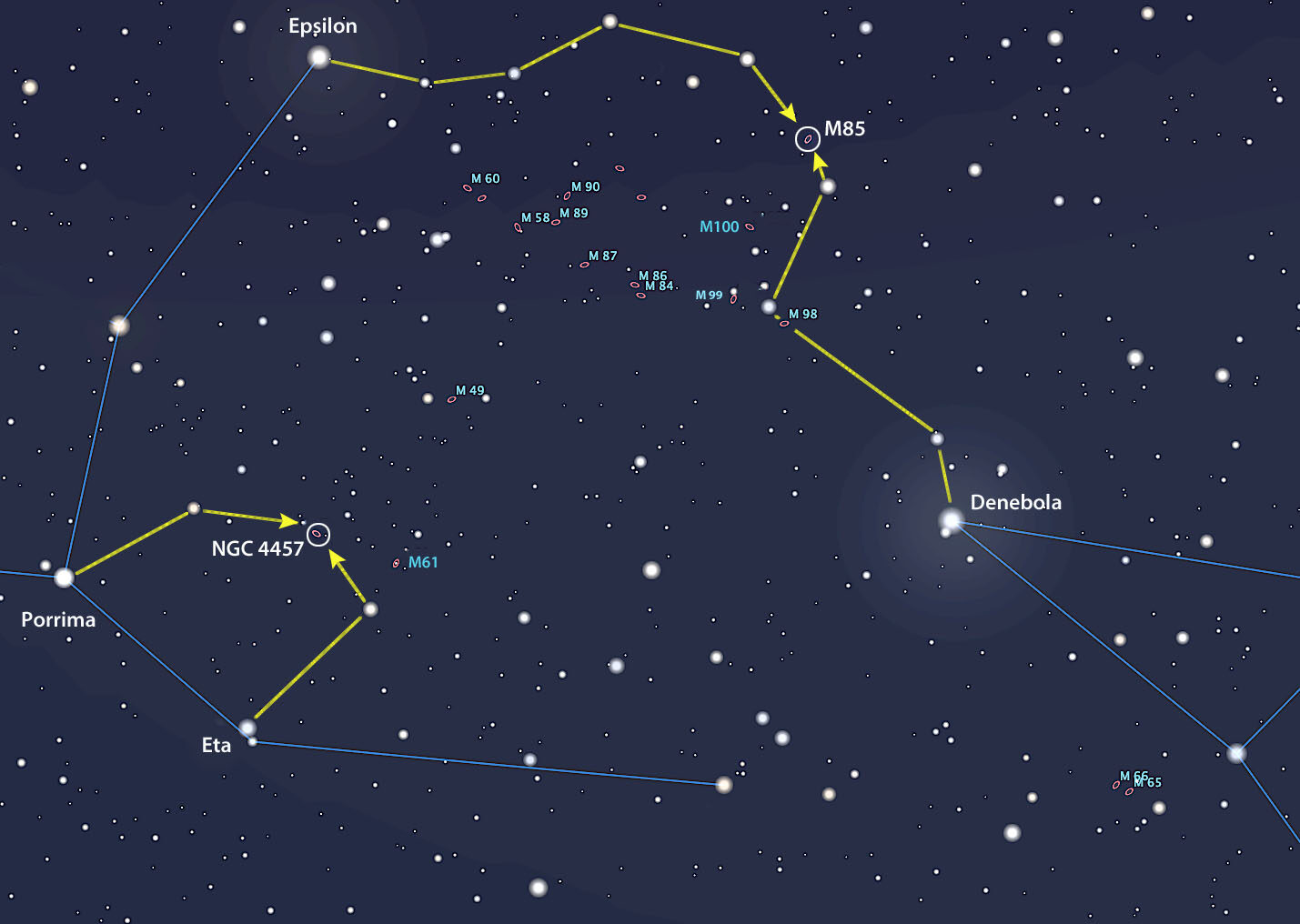
© Stellarium with additions by the authorThis more detailed map shows stars to magnitude 9. The yellow, arrowed lines are suggested star-hopping routes for you to try out . . . or pick your own.
Use your lowest magnification while star-hopping. Once you've arrived at each galaxy increase the power to 100x or higher to pick out the supernovae. Then let your imagination go. Picture each point of light as a star in the process of self-destruction, one of the most powerful and creative acts in the universe.
Creative? You bet. Supernovae explosions seed interstellar space with lots of elements, including familiar ones like iron, nickel, lead and gold. All that material regathers into great clouds of gas and dust called nebulae, within which are born new generations of stars and planets . . . and well, who knows what else, including life.








Reader Comments
to our Newsletter